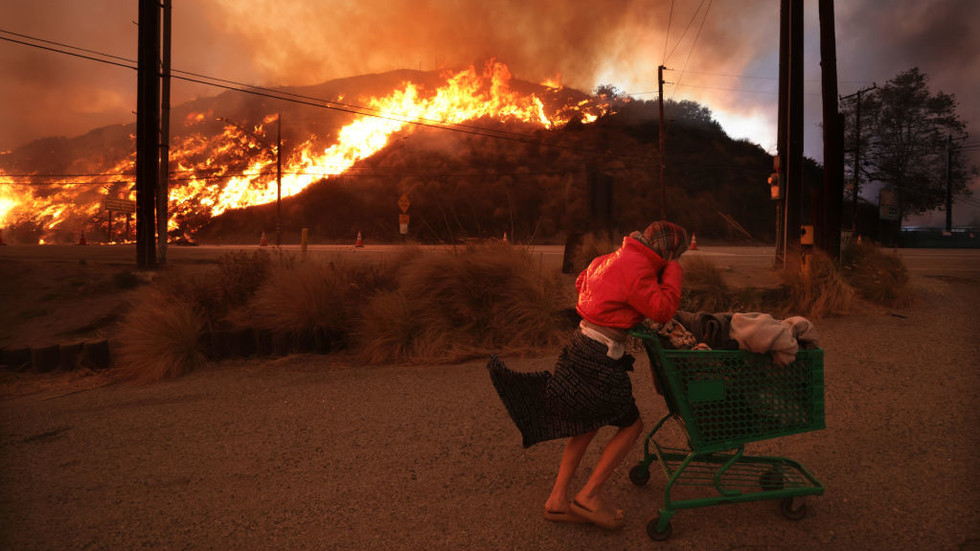Inferno Strikes: Understanding the Impact of the Devastating Wildfire in an Affluent LA Neighborhood
A catastrophic wildfire has recently swept through a wealthy Los Angeles community, leaving behind a trail of destruction and despair. The event has raised significant concerns not only about the immediate impact on residents but also about broader implications for fire safety in urban areas. This article delves into the aftermath of this tragic incident, exploring the experiences of those affected, the response from emergency services, and the urgent need for enhanced fire management strategies in affluent neighborhoods.
Immediate Impact on Residents
When the wildfire ignited in the affluent neighborhood, panic ensued. Residents were forced to evacuate their homes, many with little more than the clothes on their backs. The emotional toll was palpable; families who had lived in the community for generations watched helplessly as their beloved homes succumbed to the flames.
Residents reported:
- **Loss of Property:** Many homes were completely destroyed, reducing years of investment and memories to ashes.
- **Emotional Stress:** The trauma of evacuation and loss has left psychological scars on both adults and children.
- **Displacement:** Many families are now displaced, living in temporary accommodations or with relatives while they navigate the uncertain path of recovery.
Moreover, the wildfire disrupted essential services, leaving some residents without power, water, and internet access for days. The isolation during this period only heightened feelings of vulnerability and fear.
Emergency Response and Community Resilience
The response from emergency services was swift, involving local fire departments, police, and community organizations. Firefighters worked around the clock to combat the flames, utilizing air support and ground crews to protect homes and lives.
Key aspects of the emergency response included:
- **Evacuation Orders:** Authorities issued timely evacuations, ensuring that residents could escape before conditions worsened.
- **Firefighting Resources:** Numerous fire departments collaborated, pooling resources to tackle the blaze effectively.
- **Community Support:** Local organizations mobilized to provide shelter, food, and emotional support to evacuees.
Despite the devastation, the community exhibited remarkable resilience. Neighbors banded together, offering assistance and support to those who had lost everything. Many shared resources, provided emotional support, and helped organize recovery efforts in the days following the disaster.
Broader Implications for Fire Safety in Urban Areas
This catastrophic wildfire serves as a wake-up call to affluent neighborhoods and urban areas across the country. The increasing frequency and intensity of wildfires necessitate a reevaluation of fire safety protocols and urban planning strategies.
The Role of Climate Change
Climate change has emerged as a significant factor influencing the frequency of wildfires. With rising temperatures and prolonged droughts, areas that were once considered safe are now at risk. Experts emphasize the need for urban planners and residents alike to adapt to these changing conditions.
Fire Safety Measures
In light of the recent inferno, it’s crucial for affluent neighborhoods to implement comprehensive fire safety measures:
- **Defensible Space:** Homeowners should create defensible space around their properties by clearing flammable vegetation and maintaining a safe distance between trees and structures.
- **Building Codes:** Local governments must enforce stringent building codes that require fire-resistant materials in construction.
- **Community Awareness:** Educational campaigns can raise awareness about fire safety practices and emergency preparedness among residents.
Long-Term Recovery and Support Systems
As the community begins to heal, long-term recovery efforts will be paramount. Local government agencies, non-profits, and community organizations must collaborate to provide ongoing support to those affected by the wildfire.
Key areas of focus for long-term recovery include:
- **Financial Assistance:** Providing grants and low-interest loans to help families rebuild their homes and lives.
- **Mental Health Services:** Offering psychological support to address the emotional trauma experienced by residents.
- **Community Rebuilding:** Engaging residents in the rebuilding process to foster a sense of ownership and resilience.
Incorporating community feedback into recovery plans will ensure that the rebuilding process aligns with the needs and desires of those most affected by the wildfire.
Looking Ahead: A Call for Change
The inferno that struck this affluent LA neighborhood serves as a stark reminder of the vulnerabilities faced by urban areas in an era of climate change. As communities come together to support one another in the wake of this devastating event, it is crucial to recognize that proactive measures can mitigate future risks.
By investing in fire safety infrastructure, enforcing stricter building codes, and promoting community awareness, affluent neighborhoods can better prepare for the challenges that lie ahead. The lessons learned from this wildfire should inspire a collective commitment to enhancing resilience, ensuring that communities not only recover but thrive in the face of adversity.
In conclusion, while the wildfire has caused immeasurable pain and loss, it has also ignited a sense of purpose and unity among residents. As they work towards recovery and rebuilding, the community stands as a testament to the strength of human spirit and the importance of preparedness in safeguarding lives and properties in the future.
See more Your Daily Weather



